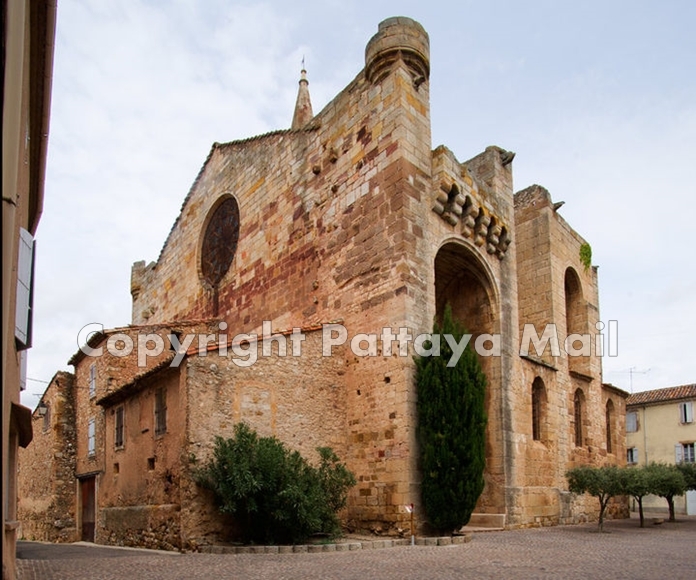
Next time you visit Toulouse to see how they’re getting along with your custom-built Airbus, you can pass the time by renting a car for the day. If you were to drive down the A61 or the A64 for a few miles, you would soon find yourself in the Comté Tolosan.
This is a massive wine-growing region that covers the whole of South-Western France and reaches down to the Spanish border. They produce more than five million gallons of wine every year there using the usual well-known grape varieties but also many local varieties.
You might never have heard of Gros Manseng, Loin de l’Oeil, Duras, Fer Servadou or Négrette but they all hang out in Comté Tolosan and almost nowhere else in the world. The region is a part of the so-called Aquitaine Basin, which includes the plains that fall between the Pyrenees, the Massif Central to the East and the Atlantic Ocean to the west.
I don’t want to bore you comatose with technical stuff, but there’s something you need to know. Between 2006 and 2012 the French revised their traditional system of wine classification. If this is news to you, please sit up and listen carefully because I am not going to bother explaining it all again. In a nutshell, the result was that wines previously classed simply as Vin de Pays (“country wines”) had to show the rather more prosaic classification of Indication Géographique Protégée (IGP) on their labels. The rock-bottom category of Vin de Table (which hardly needs translation) was changed to Vin de France. The top designation, which used to be Appellation d’Origine Contrôlée (AOC) was replaced with Appellation d’Origine Protégée (AOP). In 2011, the rather useful classification of Vin Délimité de Qualité Supérieure (VDQS) which had been introduced in 1949 was given the old heave-ho and unceremoniously chucked out altogether.
Cuvée Montplo, Comté Tolosan IGP (white), France
Both today’s wines hail from the strangely-named Domaine Montplo which lies to the east of Comté Tolosan in the region known as l’Hérault (lair-OH). It stretches from the shores of the Mediterranean to the Cévennes Mountains in the north. At its centre lies the ancient town of Béziers, known among other things for the local obsession with bullfighting. Domaine Montplo is tucked away in Cruzy, a small wine village about thirty minutes’ drive north of Narbonne.
At first sniff, the wine smells a vaguely like a Chardonnay but it’s actually a blend of Colombard and Ugni Blanc. You may be unfamiliar with Ugni Blanc, but it hails from Italy, where it’s known by the more familiar name of Trebbiano. This wine is pale yellow with hints of green and it has a lovely floral aroma of pineapple, melon, citrus fruits and honey.
When the air gets to the wine, you’ll find that both the aroma and taste open up beautifully. Comté Tolosan white wines are known for their aromatic qualities and this one is no exception. It has a soft, seductive and almost creamy mouth-feel, plenty of tropical fruit up-front and hardly any acidity. It’s not quite as dry as the proverbial bone, but it’s dry nonetheless and there’s a touch of pleasing acidity on the long finish.
It would work well with seafood but would be perfect with a simple salad. This is a really lovely wine and at only 11.5% alcohol content, I’d be quite happy to drink it on its own all evening. In fact, I think I will.
Domaine de Montplo, Pays d’Hérault IGP (red), France
The vineyards of Domaine de Montplo lie to the west of Béziers, on stony, clay-based soil. They are planted on hillsides at 200 metres altitude and benefit from proximity to the rocky scrubland and its wild herb aromas. Mind you, the aroma of this attractive, dark red wine is a bit shy at first. But if you’d been stuck in a bottle for two years, hauled from France to Thailand then dumped in a storeroom for a couple of weeks, you’d probably feel a bit withdrawn too. Eventually, when the wine has had some air contact, you’ll pick up fruity aromas of blackberry, plum, blackcurrant and raspberry. It’s worth waiting for.
The wine has a beautifully soft texture with loads of fruit on the palate. It’s balanced, well-rounded and perfectly dry with a foundation of supple tannins. There’s a very satisfying long, dry finish with just enough tannin to remind you that this is a real French wine, not a Californian crowd-pleaser.
It’s made from two local grape varieties, Carignan and Grenache, the second of which also happens to be one of the most widely planted red grapes in the world. At just 12% alcohol content it would make an excellent partner for light meals, especially with cheese.
By the way, both these wines come with a very welcome screw cap (or “Stelvin closure”, if you want to impress your friends). I’ve grappled with so many corks in my time that a screw cap comes as a great relief. Yes, I know it lacks a certain mystique and romance, but there again, so does an Airbus.
The wines described in this column are generally available in Thailand, either from local outlets or from online wine suppliers.
 |
 |
 |





